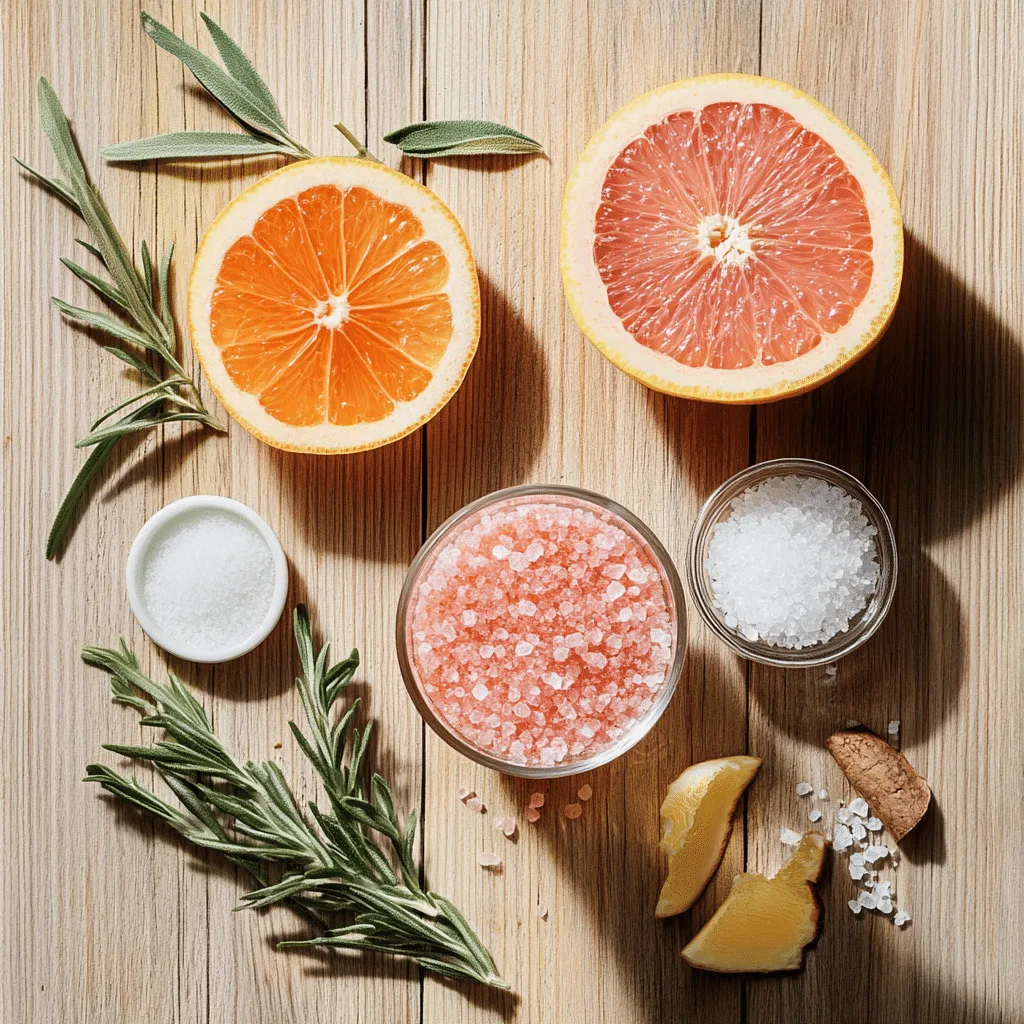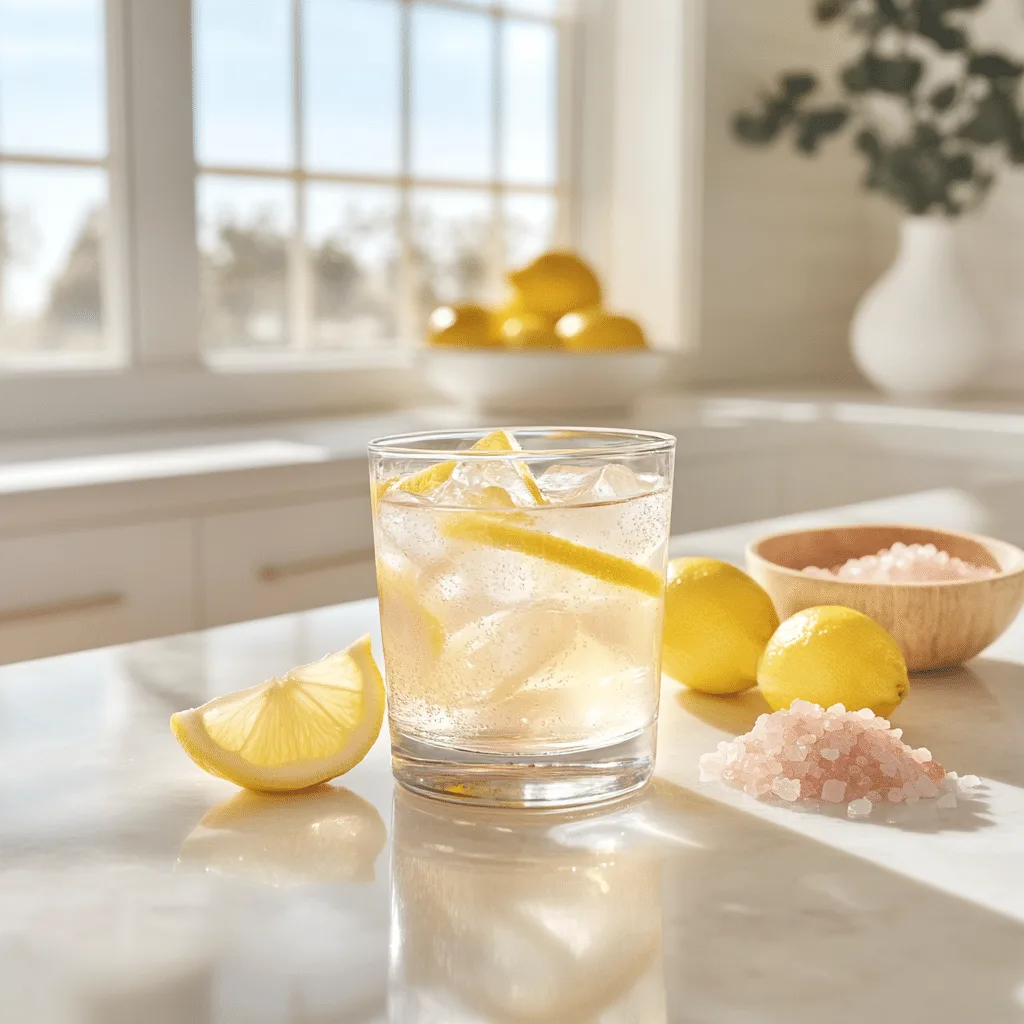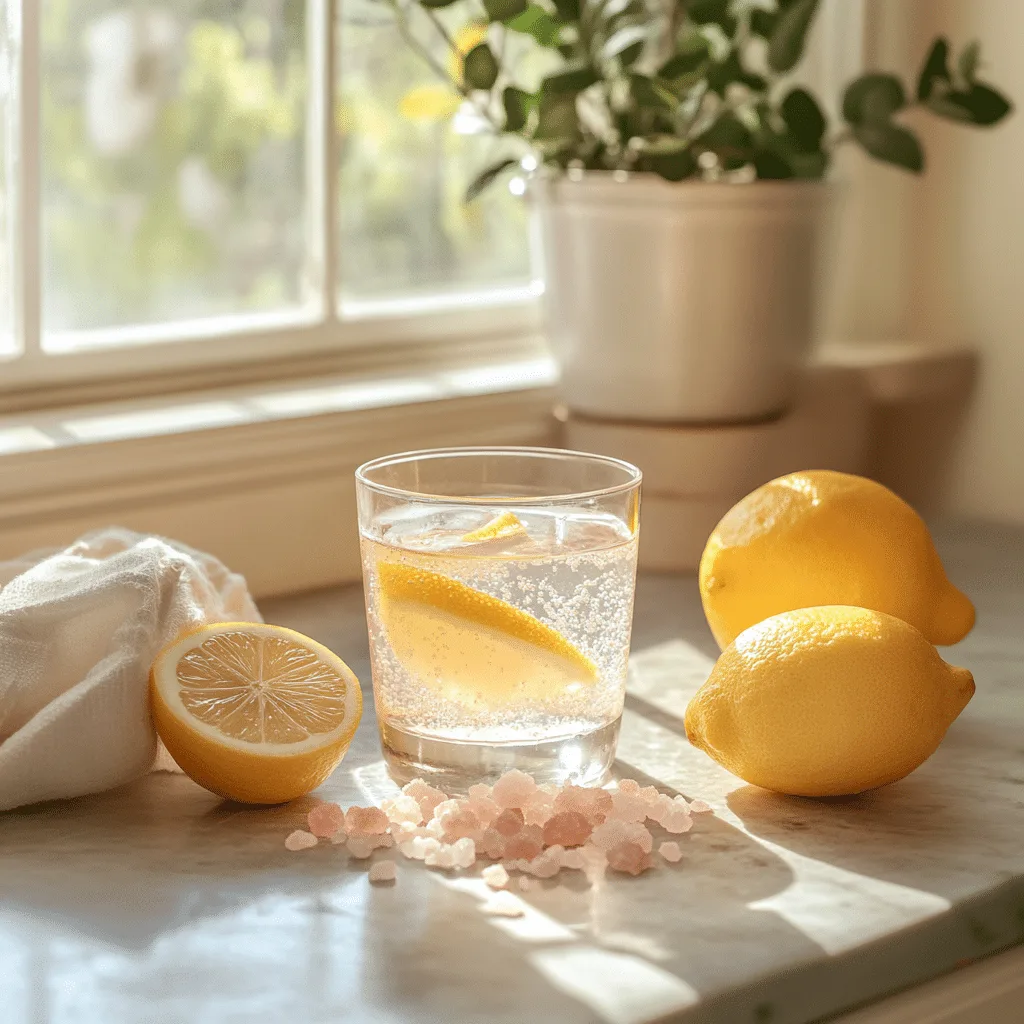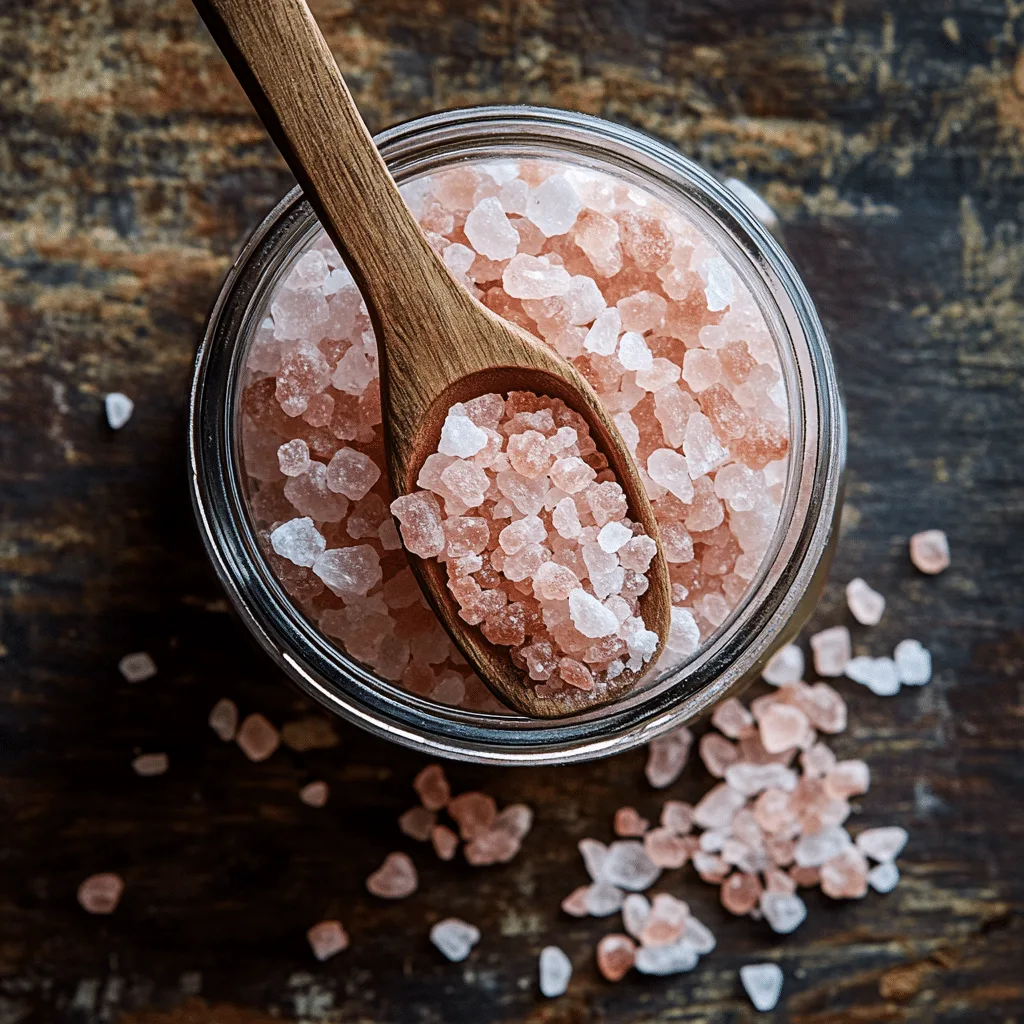The first time I noticed pink salt, it wasn’t in a fancy recipe—it was at a tiny natural store, tucked in a clear grinder next to a jar of honey. It looked like crushed crystals, almost too pretty to be real salt. I didn’t buy it that day. But weeks later, I saw it again—this time in a detox drink recipe. From there, this pale mineral popped up everywhere: in trendy kitchens, on wellness blogs, and in homemade Mounjaro drinks. I finally gave in and tried it—and it became a regular part of my cooking and morning routine.
So what is pink salt, and why does everyone seem to have a grinder of it on their counter these days?
In this guide, we’ll walk through what makes it so different from table salt, how it may support hydration and digestion, and why it’s not always the best choice for everyone. You’ll also learn about the viral “trick” people use it for—and whether it’s truly effective.
And if you’re curious about real-life recipes? Don’t worry—I’ll link you to my go-to weight loss recipe using this salt that kicked it all off for me.
My Favorite Pink Salt Products
Let’s dive in.
What Is Pink Salt and Why Is It So Popular?
The Origin and Composition of Pink Salt
Pink salt isn’t just a trendy name—it’s a naturally formed mineral that dates back millions of years. Most of it comes from the Khewra Salt Mine in Pakistan, one of the oldest and largest salt deposits in the world. What makes this salt different from regular table salt isn’t just its delicate blush color. It’s the presence of trace minerals like iron (which gives it that pink hue), calcium, magnesium, and potassium.
Unlike heavily processed table salt, which often contains anti-caking agents and added iodine, pink salt is typically hand-extracted and minimally refined. That means it keeps its natural structure and those trace elements, although the amounts are very small. Some fans believe it helps support hydration, mineral balance, or even digestion. While science doesn’t support all of these claims, many home cooks and health-conscious foodies choose it for its purity and natural origin.
It’s also the basis for what’s known online as the pink salt trick, a hydration practice that some swear by for energy and detox support. We’ll dive deeper into that trend later, but it’s clear this salt offers more than just color—it comes with story, tradition, and simplicity.
Everyday Culinary Uses You Didn’t Expect
At first glance, pink salt may seem like something meant only for upscale dinner parties or food photography. But the truth? It’s surprisingly useful in everyday meals. In fact, one of the most popular uses for it is in Japanese-inspired cooking. For example, our Japanese Pink Salt Recipe balances subtle flavors beautifully, proving it’s not just about appearance—it actually brings something to the plate.
The coarse crystals of pink salt make it perfect for seasoning meats before grilling, finishing roasted vegetables, or even rimming cocktail glasses. It has a gentler flavor than standard table salt, which some describe as slightly earthy or mineral-rich. That makes it ideal for raw salads, light broths, or even in desserts where you want salt to complement—not overpower—sweetness.
It’s also used in non-culinary ways, like creating salt blocks for grilling or therapeutic salt lamps. But for most of us, the real charm lies in how pink salt elevates even the simplest dishes without being aggressive. It’s both functional and beautiful, and honestly, there’s nothing wrong with loving both.
How to Store and Use Pink Salt Correctly at Home
Pink salt may look like a fancy spice, but it behaves like any natural salt when exposed to moisture—meaning it needs proper storage. The ideal setup is simple: keep it in a glass or ceramic jar with a tight-sealing lid, away from steam or humidity. Skip the spice rack above the stove or near the dishwasher.
If you’re using coarse crystals, grinding small amounts at a time keeps the texture crisp and prevents clumping. You can also keep a small jar of fine pink salt on the table, but refill it only as needed to avoid exposure.
One common mistake? Using salt from bath kits in the kitchen. Even though it’s pink, bath-grade salt isn’t processed with food safety in mind and may contain non-edible additives. Always make sure your salt is food-grade, especially if you’re cooking or mixing detox drinks.
With the right storage and handling, this mineral-rich salt can stay fresh for months—ready to sprinkle, mix, or sip whenever you need it.
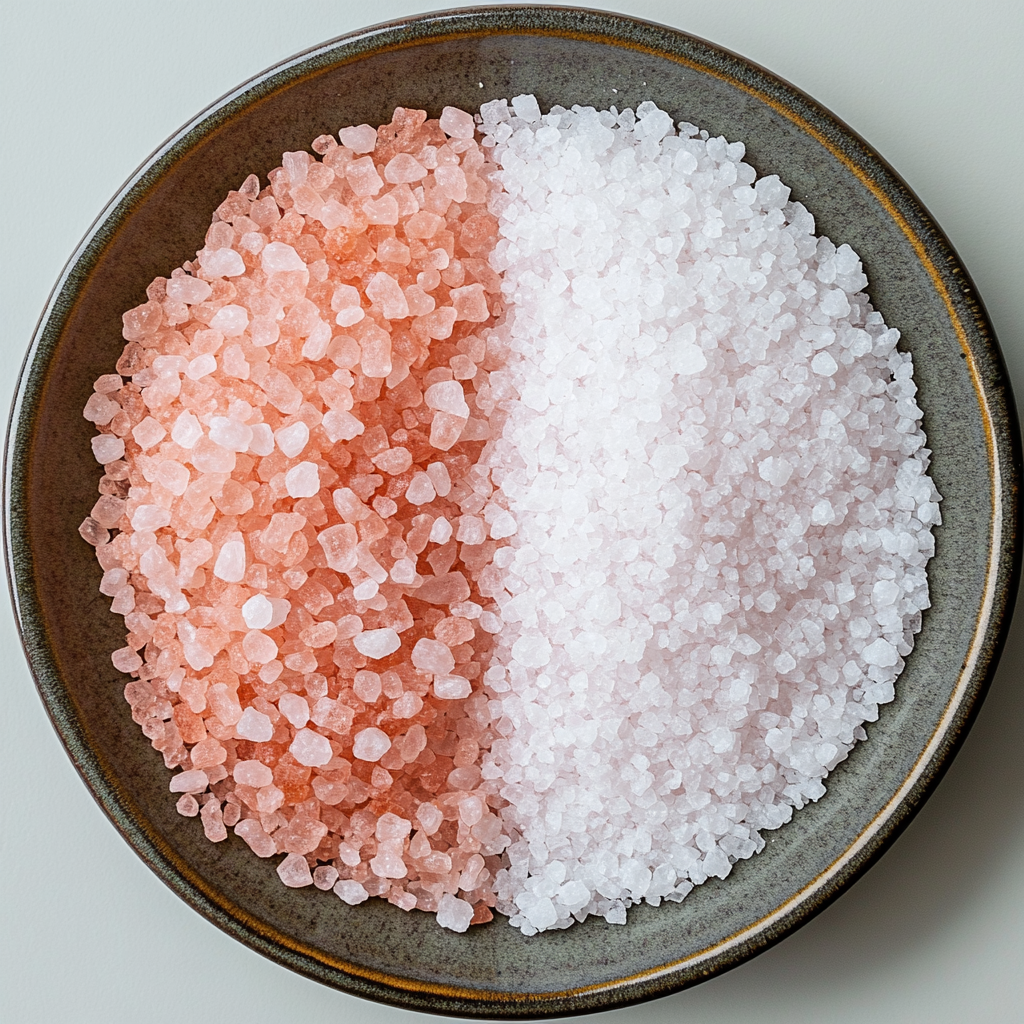
Health Claims, Risks, and Real Benefits of Pink Salt
Can Pink Salt Help You Lose Weight?
The buzz around this mineral salt really took off when people started adding it to their morning drinks. From lemon water with a pinch of salt to complex mineral cocktails, the idea is simple: replenish electrolytes, stay hydrated, and possibly support digestion. The most talked-about version? What many now call the trick involving Himalayan salt for weight loss.
So, what is it exactly? It’s a quick morning mix—usually warm water, a splash of lemon, and a pinch of this natural salt—meant to be consumed on an empty stomach. The theory is that it helps jumpstart hydration, improves digestion, and may curb cravings. But is it a magic solution for fat loss? Not quite.
There’s no scientific evidence proving that this seasoning itself burns fat. However, staying hydrated in the morning can absolutely support your metabolism and energy levels—especially if you’ve been fasting overnight. That’s why so many people swear by our simple pink salt weight loss recipe as part of their daily wellness ritual.
Is it a cure-all? No. But if it encourages you to hydrate first thing and avoid sugary breakfast choices, that’s a healthy habit worth keeping.
According to the Journal of Clinical Nutrition, hydration after overnight fasting may slightly increase resting metabolism by up to 30% for 30–40 minutes.
Type of Salt Sodium (per 1g) Added Minerals Best Use Pink Salt ~380mg Iron, Magnesium, Calcium Hydration, Seasoning Sea Salt ~380mg Varies Cooking, Finishing Table Salt ~390mg Iodine Baking
Who Should Avoid Pink Salt? (Myth vs Truth)
Just because something is natural doesn’t mean it is harmless for everyone. One of the biggest common salt-related myths is that it’s “safe for all” or somehow healthier than any other salt. In reality, this pink-colored ingredient contains sodium—just like any salt. And for people with high blood pressure, kidney issues, or salt-sensitive conditions, moderation is still key.
There’s also confusion around its mineral content. Yes, it contains trace elements, but not in quantities high enough to replace supplements or treat deficiencies. Claims that it “detoxes” your body should be taken with caution—your liver and kidneys do that job all day long, whether you use this seasoning or not.
To help you understand how the pink variety compares to others, here’s a quick side-by-side:
| Type of Salt | Sodium Content | Minerals | Taste Profile |
|---|---|---|---|
| Pink Salt | Moderate | Iron, Magnesium, Calcium | Earthy, Mellow |
| Table Salt | High | Iodine (added) | Sharp, Intense |
| Sea Salt | Moderate | Varied (depends on source) | Briny, Fresh |
If you’re already using it in moderation and it fits your needs, it’s a fine choice. But it’s not a nutrient booster or medical treatment. It’s still salt—and moderation is always the right call.
For a deeper breakdown of its real benefits and misconceptions, check out Does Pink Salt Help in Weight Loss?, where we explain what the research really says.
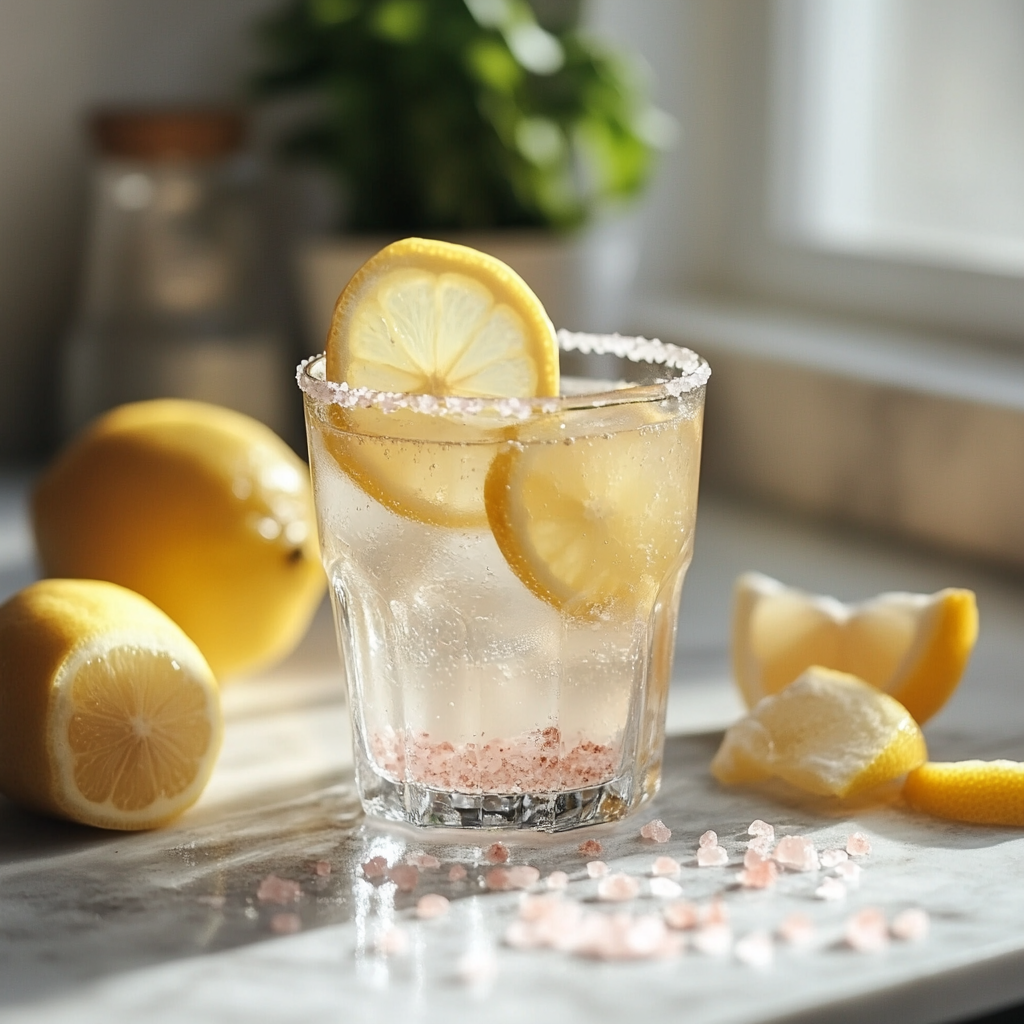
Pink Salt Trends, Hacks, and Recipes
The “Pink Salt Trick” That Went Viral
You’ve probably heard of the “pink salt trick” by now—it’s made the rounds on social media, especially among wellness bloggers and early-morning hydration fans. But what exactly is it?
It’s a simple ritual. You wake up, pour a glass of warm water, squeeze in half a lemon, and stir in a pinch of pink salt. Some even add apple cider vinegar. The idea? To wake up your digestive system, replenish lost minerals from overnight fasting, and possibly reduce cravings early in the day.
Supporters claim it gives them more energy, less bloating, and better focus. While these results vary from person to person, there’s logic behind the habit. Hydrating first thing in the morning—with a mix that includes sodium and potassium—can help balance fluids, especially if you follow a low-carb or intermittent fasting lifestyle.
No lemons on hand? This bottled lemon juice works great in a pinch, especially if you travel or prep ahead.
We covered the origin and results of this habit in our full What Is the Pink Salt Trick? post, where we break down how it became popular and whether it’s worth trying long term.
It’s not a miracle solution, but it might just be your easiest wellness win of the day.
If you’re ready to try the classic pink salt drink yourself, here’s the simple recipe I use regularly. It’s light, easy to make, and works best first thing in the morning.

Pink Salt Morning Drink (Hydration Boost Recipe)
Equipment
- glass or mug
- spoon
- lemon juicer
- measuring spoons
Ingredients
- 1 cup warm filtered water
- 1/2 fresh lemon, juiced
- 1 pinch pink Himalayan salt (food grade)
- 1/2 tsp apple cider vinegar (with the mother, optional)
Instructions
- Warm the filtered water slightly (not hot).
- Add the freshly squeezed lemon juice.
- Stir in the pink salt until fully dissolved.
- Drink immediately on an empty stomach, preferably in the morning.
Notes
Nutrition
Homemade Pink Salt Recipe with Mounjaro
One of the more unique uses for pink salt in recent months has come from the diabetic and weight-loss community: combining it with Mounjaro. No, it’s not a replacement for medication. But some home cooks have found that combining pink salt with certain blood sugar–friendly ingredients can help support hydration and manage cravings during long fasting windows.
In our detailed Homemade Mounjaro Recipe with Pink Salt, we show you how to make a simple drink using unsweetened citrus, water, a pinch of this mineral-rich salt, and a touch of bitter compounds (like grapefruit or dandelion tea). It’s refreshing, functional, and easy to make.
This recipe is especially useful for those following metabolic reset diets, glucose management plans, or anyone trying to avoid sugary pre-workout drinks.
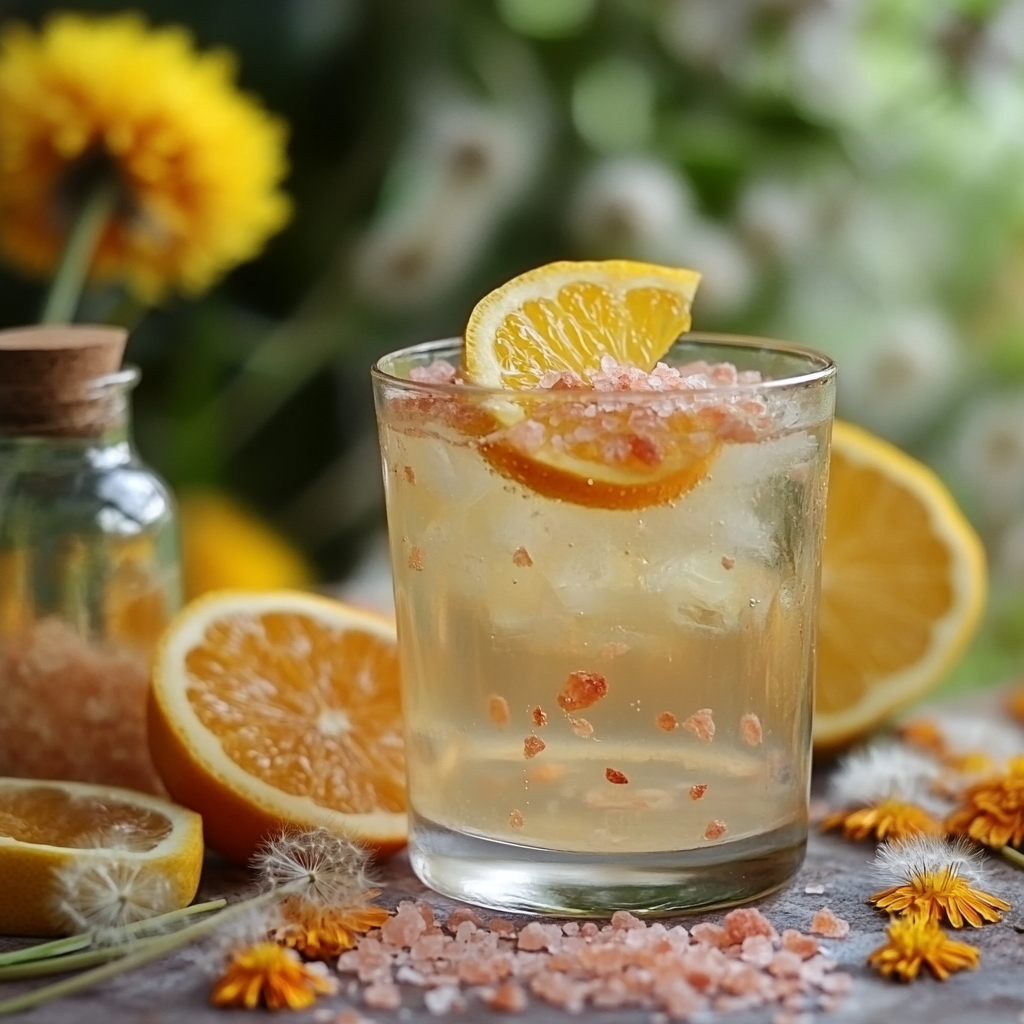
Ivy’s Kitchen Note:
I tried this Mounjaro-inspired pink salt drink during a week of heavy recipe testing, and I have to say—it helped. I didn’t feel sluggish mid-morning, and I avoided my usual snacking before lunch. It’s not about replacing a balanced diet, of course, but for me, it worked as a small daily habit that kept me feeling steady. It’s now a go-to in my kitchen, especially on fasting days.
How to Choose the Right Pink Salt at the Store
Shopping for pink salt can be surprisingly confusing. Between gourmet jars, spa-grade soaks, and glowing rock lamps, it’s easy to grab the wrong type for your kitchen.
When choosing pink salt for recipes, always look for labels that say “food-grade” or “culinary use.” This guarantees it’s been handled in a way that meets safety standards. If it’s labeled for bath or spa use only, skip it for anything edible—even if it looks the same.
Check the country of origin, too. Authentic Himalayan pink salt usually comes from Pakistan’s Khewra mine. That said, some versions labeled “Himalayan” may be mixed with other salts or processed with additives. The ingredient list should contain just one word: “salt.”
Texture is also key. Fine pink salt is best for table use or baking. Coarse crystals work well for grinding fresh or for decorative finishing. There’s no need to overpay—great quality doesn’t have to be labeled “artisan” or come in boutique packaging.
Stick to the basics: food-safe, pure, and appropriate texture for your cooking style. That’s all you really need.
Frequently Asked Questions About Pink Salt
What is so special about pink salt?
What sets pink salt apart is its origin and natural composition. Unlike table salt, which is processed and often contains additives, this variety is mined directly from ancient sea beds in the Himalayan region. That’s why it retains trace amounts of minerals like iron, magnesium, and calcium—elements that give it its soft pink color.
While those mineral levels are small, they offer a touch of depth to the taste and make pink salt feel like a more “whole” option for people looking to simplify ingredients. It’s this natural purity, and the story behind its formation, that make it stand out in today’s wellness and culinary circles.
What is the pink salt trick for weight loss?
The pink salt trick is a morning drink routine that’s gained popularity for its simplicity. It involves mixing warm water, lemon juice, and a pinch of pink salt, usually consumed on an empty stomach. The goal is to jumpstart hydration, balance electrolytes, and support digestion before eating anything else.
It’s important to note that this drink doesn’t directly cause weight loss. But staying hydrated early in the day and avoiding sugary drinks or snacks can support a healthy metabolism. You’ll find the full version of this drink in our pink salt weight loss recipe, where we share tips on when and how to use it safely.
Who should not take pink salt?
While pink salt is natural, it’s still sodium—meaning it’s not ideal for everyone. People with high blood pressure, kidney conditions, or those on sodium-restricted diets should speak to their healthcare provider before using it regularly.
Also, some assume its mineral content makes it safer than regular salt. That’s not true. The mineral trace levels are not high enough to change the overall sodium effect on the body. Like any salt, moderation is key.
What is the healthiest salt to use?
There’s no one-size-fits-all answer here. Pink salt, sea salt, and table salt all have pros and cons depending on your health goals. For example:
Table salt has added iodine, which supports thyroid health—but it’s more processed.
Sea salt may contain trace minerals, but depending on the source, it could also carry environmental pollutants.
Pink salt is minimally processed and contains trace elements, but not enough to make a nutritional difference.
Ultimately, the healthiest salt is the one that fits your dietary needs and is used in sensible amounts. You’ll find a comparison chart earlier in this post to help you choose.
Stay Connected With Me
If you enjoyed this guide and want more real-life kitchen tips, easy pink salt recipes, and wellness rituals that actually work, come join the conversation. I share updates, mini how-tos, and behind-the-scenes tests across platforms. Follow me here:
– Facebook
– Instagram
– Twitter (X)
– Pinterest
I love connecting with people who are building better habits—one ingredient at a time.
Conclusion
Pink salt is more than just a trend—it’s a natural, beautiful ingredient with a growing place in modern kitchens and wellness routines. Whether you’re trying the pink salt trick in the morning, exploring recipes like the Japanese Pink Salt Recipe, or creating your own homemade electrolyte mix, it’s a simple way to bring flavor and intention to your day.
Remember, it’s not a magic solution. It’s still salt. But when used thoughtfully, it can support a clean, mindful way of eating and living.
If you’re curious where to start, try the easy himalayan salt weight loss drink or see how we’ve combined it with Mounjaro for fasting days. You might just discover a new favorite ritual in your kitchen.
🛒 My Favorite Pink Salt Essentials (Amazon Picks)
- Fine Himalayan Pink Salt by Soeos (38.8oz)
- Coarse Pink Salt by The Spice Lab (2.2lb)
- Himalayan Glow Salt Lamp (5–7 lbs)
- Stainless Steel Grinder – Adjustable Coarseness
- Organic Apple Cider Vinegar – With “The Mother”
- Bottled Lemon Juice (32 oz)
- Magnesium Bath Flakes with Himalayan Salt (8 lb)
- Dr Teal’s Pink Salt Body Scrub (Pack of 3)
Related posts
